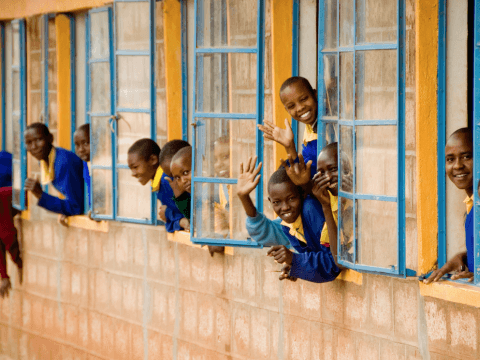Gaps in Children Education Levels Hamper Development in Kenya and Africa

By Sarah Ooko | Senior Communications and Media Officer, World Vision Kenya
Education is paramount for Africa’s development. It equips children, who are future drivers of the continent’s economic growth with appropriate knowledge to tackle development challenges.
Kenya, just as many countries in the region has made strides in the education sector, making it possible for as many children as possible to get basic primary education and proceed to secondary school.
Despite these gains, primary school completion rates are still low in most rural pastoralist communities with high poverty levels.
In these areas, children grapple with a myriad of cultural, development and economic hurdles that impede their effective participation in school.
This has created a literacy gap between children from wealthy backgrounds and those from less privileged households hence hampering universal access to education that is a precursor for rapid economic growth.
Leave no child behind
As countries recently marked the Day of the African Child (16, June, 2018), development agencies called on nations to bridge these gaps by finding solutions to problems that affect the education of children.
This call was in line with the 2018 theme for the Day: Leave no child behind for Africa’s development.
“All children should go to school. It is their right so no one should deny them the opportunity,” said James Keitany, Education Project Manager at World Vision Kenya.
According to him, Kenya should keep fighting retrogressive cultural practises such as female genital mutilation (FGM) and early child marriages that make children, especially girls, to drop out of school.
“In communities where they happen, once a girl has been cut, she is considered a woman who is now fit for marriage and child bearing, so she won’t come back to school.”
Young girls may also discontinue their education when parents or guardians force them to remain home and take care of younger siblings or participate in income generating activities.
Among pastoralists such as the Masais, Keitany stated that boys are considered Morans upon circumcision. They are thus charged with the responsibility of protecting the community as well as looking for pasture and water for livestock.
“So during dry spells, they are required to migrate with animals to far flung areas to look for grass and water. They stop going to school and may never go back.”
Sometimes, children’s education may also be interrupted in times of conflicts when families flee their homes for security purposes.
Giving children a second chance to learn
To address these challenges, World Vision Kenya and Unicef have been working with the government to implement a project titled: Bring Back Out of School Children.
“Through this initiative, we reach out to children who have dropped out of school for one reason or another. We then support them to go back to school and be able to participate fully in their education without facing further disruptions.”
The children who have been away for many years go through remedial classes and accelerated lesson programs that enable them to catch up with other pupils.
To retain the children in school and dissuade them from dropping out, the project supports school feeding programs as well as construction of boarding facilities.
“Most of these children come from homes where there’s insufficient food. Therefore, when they know there’s something they can eat in school, they will keep coming.”
On the other hand, he added that boarding facilities allow children to stay within the school environs where they can concentrate on learning without negative external distractions from their families and society at large.
For enhanced school enrolment and retention, the project is also constructing schools near communities as education facilities situated far from homes also discourage children from learning.
“When children have to walk over long distances for many hours to go and come back from school, they get tired and fatigued. This may make many of them to give up on learning after some time.”
The project is being implemented in Kajiado, Wajir and West Pokot counties. It has succeeded in bringing back a total of 53,899 children (28,058 boys and 25,841 girls) back to school.